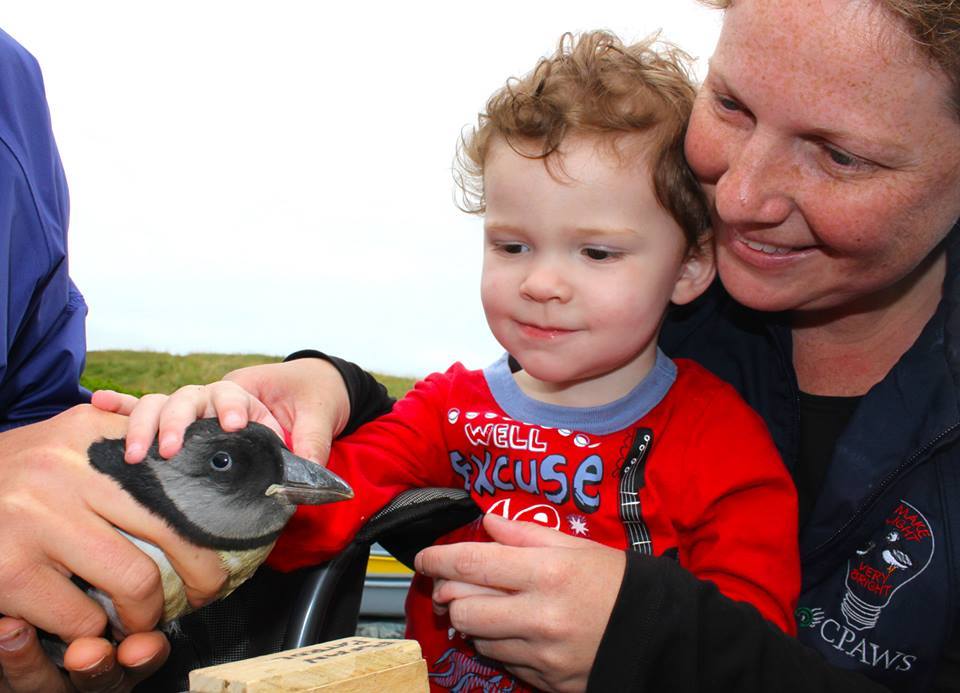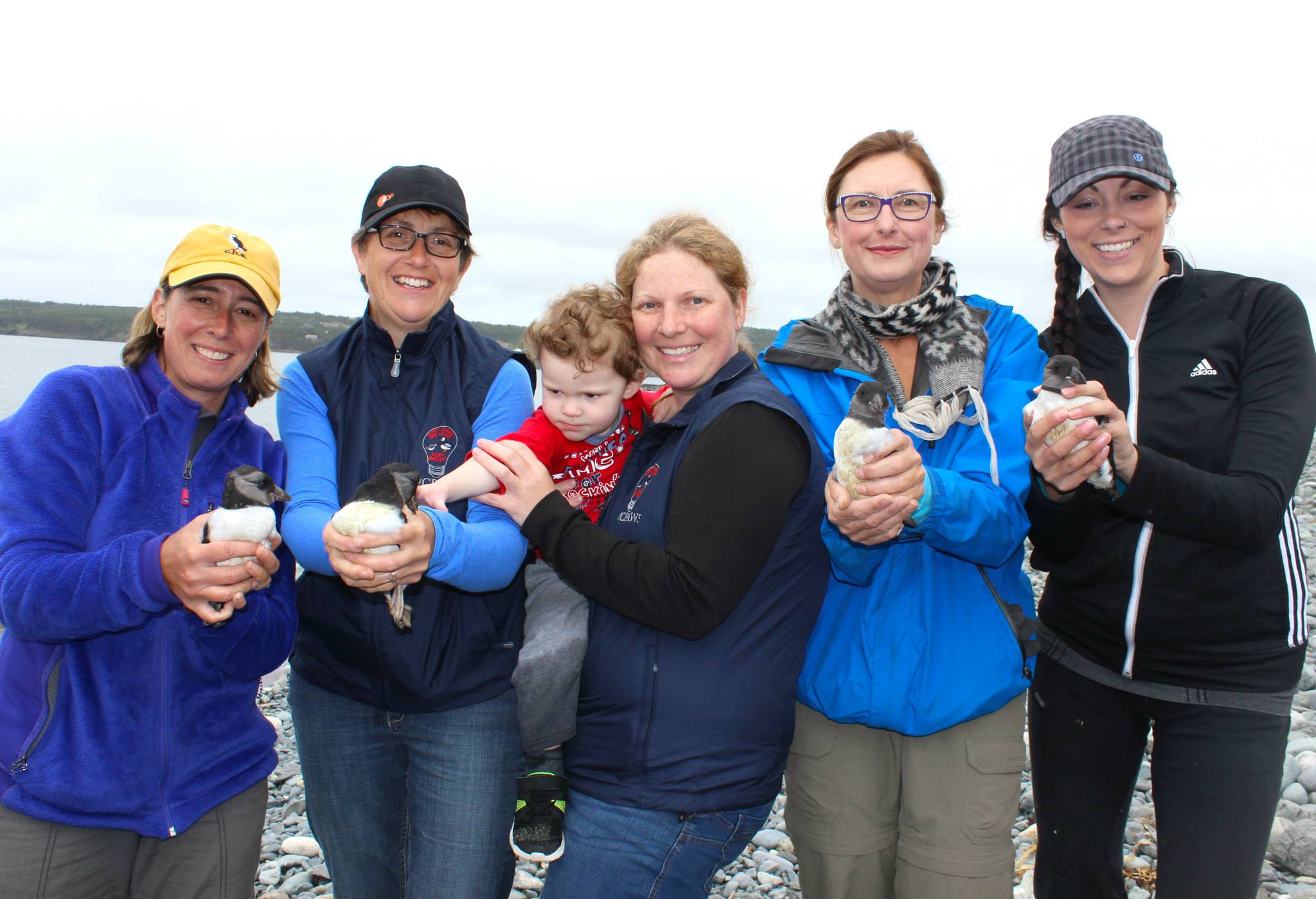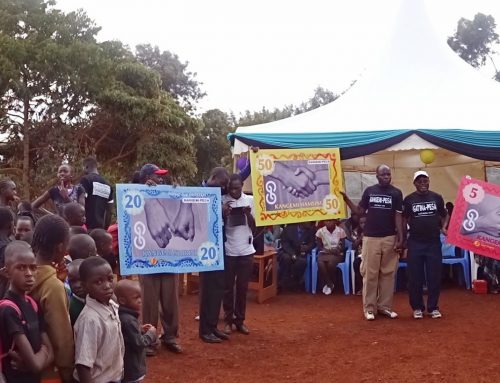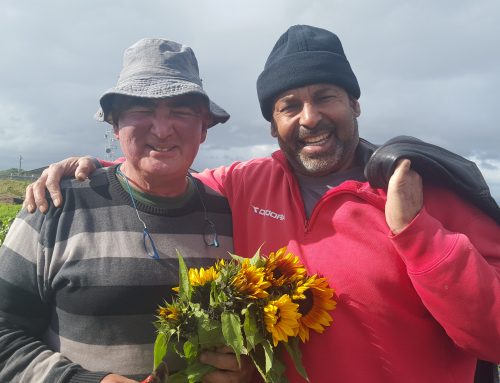How can a community work together to protect an endangered species threatened by local development?
If you find yourself in Witless Bay, Newfoundland, on a cool late summer night, you are likely to see a strange sight: little puffins, wandering around the town, seemingly lost, less than one foot tall, meandering around cars and light posts.
This remote Canadian region is home to the largest Puffin colony in North America where more than 260,000 pairs of puffins make their summer nests every year. Adult puffins will dig burrows to lay their eggs every spring, and starting in August, fledglings will leave the nests and start making their way out to sea for winter foraging. To avoid predators, the puffins fledge at night and navigate using the light of the moon and stars on the horizon. However, on foggy nights (which are common on the island), the juvenile birds can easily mistake the lights of the town for the moon and often dive into streets and sidewalks by accident, instead of the sea. Hundreds of birds are affected every summer.

Puffin Patrol releasing puffins back to the sea. Photos by Sebastien Depres
The problem has prompted the local community, along with the local Canadian Parks and Wilderness Society, to start the Puffin Patrol. Every night in late summer, volunteers from the local community drive around looking for lost and disoriented puffins. They catch them with nets and bring them to “puffin headquarters” for an overnight stay. The next morning, a core group of volunteers release the puffins at the beach.
The Puffin Patrol has other tactics to prevent puffin disorientation. They work closely with local businesses and homeowners to educate about outdoor lighting; they support practices such as the installation of LED lights, reducing utility pole heights, and installing motion sensors on lights to reduce overall light pollution in the area. A handy guide is available for the community.
The project started with a handful of volunteers but has gotten steadily more popular. Just this past year, project coordinator Suzanne Dooley received over 140 requests from both people in the community and vacationers, some of whom plan their entire holiday around Puffin Patrol participation. Interest has been especially piqued due to the groups TV appearance on David Suzuki’s The Nature of Things last summer.
Dooley says that the project goes beyond the puffins and reflects the community’s growing general interest in seabird life. In the last five years, the project has expanded to also retrieve petrels, another imperilled seabird which is attracted to the lights of the town. One of the main benefits of the program is teaching the community about the life history of these animals. A greater understanding of local ecology can help to foster a greater connection between people and nature. Children in the community can grow up identifying birds and develop special connections with their surrounding ecosystems.
This project has a certain “wisdom on the hoof” philosophy. There was a problem facing a local species and the people of the community worked together to create a system to save vulnerable birds while keeping sustained support for the project. This conservation does not set itself up to be opposed to local development, and takes every opportunity to educate the community and promote a positive culture between humans and nature. In this way, the project can potentially “scale out”, inspiring other places, or “scale deep”, changing the values of the community where it’s located.
The project has been inspired by other places that have dealt with similar problems. Dooley cited that a community Hawai’i has a similar issue with their Petrel populations and have innovated different types ways to mitigate light pollution on the coasts. National projects such as Fatal Light Awareness Program (FLAP) aim to promote legislation that addresses light pollution in urban areas to protect the flightpaths of migratory birds.
This project is different from many other seeds, because its ultimate goal is to make itself obsolete. This seed does not aim to grow, but rather to change the conditions of its environment and inspire other places to protect species at risk. Dooley said that sometimes tourists are upset when they go out for a patrol and don’t find any birds. She feels the need to continually remind them that this isn’t a tourist venture, it’s a conservation effort. As she put it, “No birds is good news.”



